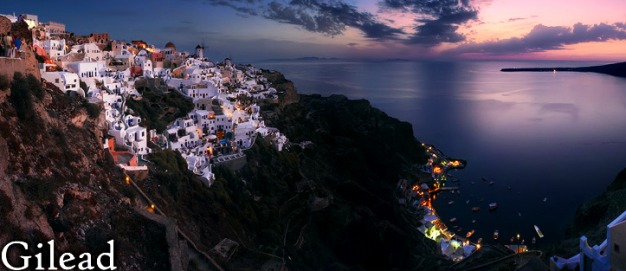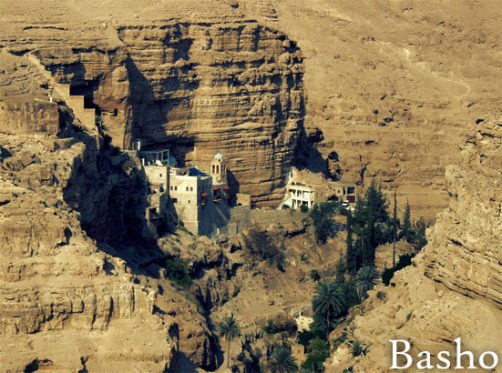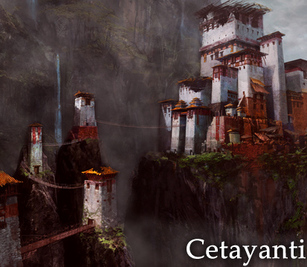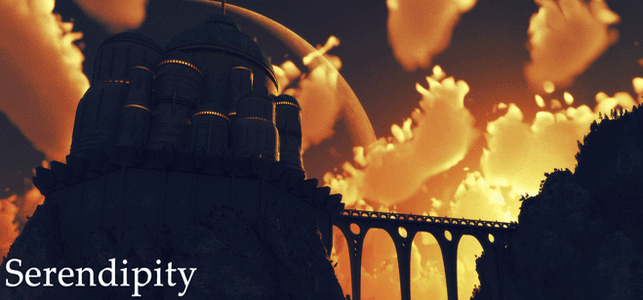W o r l d o f L o k a
Loka: Geographical Areas and Features
The Whitemarch
The Whitemarch is, simply put, the rest of the known world. Surrounding the temperate land of Loka is a vast, desolate frozen wasteland. This is where the untouched ruins of the ancient Svargan civilization lie under several feet of hard-packed snow and ice, crumbling edifices of brick and steel, decrepit tombs of dead and dilapidated artifacts and machines of unknown origin and purpose. Terrible creatures roam the Whitemarch, monstrous and inbred descendants of the survivors of the holocaust, both animal and human, that hundreds of years ago turned the world into the bleak tundra it is today.
Sastra Forest
The mysterious “Oasis Thaw” generated by the Grand Castrum has become the catalyst for a lush, massive forest that blankets the entire eastern half of Loka. This woodlands is home to dozens of tribal Pasu, as well as criminals from all races. Sunbeam glades carve golden paths through shadowy groves, and birds sing deep in the green….
Samudra Desert
An uneven distribution of the Oasis Thaw has all but stripped the southwest quarter of Loka of its moisture, and thus its plant life, turning it into an arid desert inhospitable to anyone but the hardiest of Lokans. This is where the premiere training camp for the Viramarga is located, as well as Lepton Prison.
Sea of Rocana
Icemelt has created a tremendous sparkling blue lake in the southeast quadrant of Loka, creating a fertile and welcoming place to live and trade. The climate here is almost tropical, lending itself to the establishment of a number of settlements, such as the gilded trade city of Gilead, the dreary delta-swamp city of Meson, and the raucous pirate port of Esquemelin.
Alburz Mountains
The Alburz mountain range looms over the entire south half of Loka, presenting a fearsome rampart against the snowy south wastes. This spine of four peaks is home to several races and organizations, such as the Tseiqami clan of Mt. Erebus and the monastery of Cetayanti on Mt. Alburz.
Plains of Bhuma
Endless, rippling fields of grass are the signature of the Plains of Bhuma. This is the center of agriculture and rural life in Loka, and where a majority of the population lives.
Towns, Villages, Landmarks, and Outposts
Major Cities in Bold Text

Abhi
Just outside the Atash Bagram school, Abhi functions as both a waystation for caravans and as a lifeline for Basho. Dozens of pueblo buildings perch high on the wide cliffs of the pass between the plains of Bhuma and the desert, and parched plank bridges cross back and forth between buildings, while travellers move through the shifting shadows far below.
Acre
Easily one of the largest cities in all of Loka, the highly urbanized Acre primarily serves as the home of the Coliseum, where warriors from all races and all creeds come to test their mettle and prove their worth. Brick and iron buildings loom over narrow cobblestone streets, veins to the heart that is the gigantic Coliseum Plaza.
Adele
Many miles within the Whitemarch, is the town of Adele. Town may be too big a word, more like outpost. For it’s populated by a few brave Pasus; some of the vulpine species, a few farus, and even a few humans. Why are they here? This is the northern most village of the Viramarga, Loka’s premiere paramilitary school of the arts of war. This village is used to train the members in endurance, and cold-weather military work.
Ashvamedha
Ashvamedha is an imposing structure of stone and scavenged metals. A large fortress, an iconic symbol of protection to the people in the valley below. Turrets on six towers keep an eternal vigil. Pasus and a few humans populate this place, but mainly a nomadic tribe of deer Pasu called the Hindvalians.
Basho
Situated at the mouth of the desert near its sister city Abhi, Basho is a small, tight-knit village of pueblos and precarious wooden scaffolding shelters, whose woven roofs flap in the breeze like sails. It is dedicated to the training and honor of the Viramarga and its elite contingent, the Atash Bagram, and the focal point of the village itself is the simply-named Sand Temple, a monastic dojo where neophytes battle each other and learn the ways of peace by power.
Baryon
The town of Baryon is rather small, with wood and stone houses lining the dirt road and trees surrounding the town on every side, filling the air with the scent of pine. The houses seem pretty decent, with stone bases and sturdy wooden walls and roofs, with wooden staircases that lead up from the roads to the doors of each building.
Cetayanti
The sprawling monastery of Cetayanti can be seen from the somewhat flat peak of the mountain, stretching out into the distance. While the Disciples and their students practice self-denial, the priory itself is quite ornate, if not lavish. The walls of the building are of a white masonry, with many windows to allow as much natural light as possible. It is here that the Disciples, initiates, and other denizens of the monastery live, learning the arts of the Cela.
Escorus
Travelers through this way have to go between a few narrow ridges before they are greeted by the large covered bridge that leads to the rebuilt town of Escorus. It’s one of the first signs of civilization out this direction. Small at first sight, it’s actually a bustling community of shops, homes, schools, and even the beginnings of a small post office. The center of the town shows the mixture of species, as well as the bustling community.
About a decade ago, the town of Escorus was razed to the ground by a man named Taskaru. He was stopped by a Fox named Kelketek, the then captain of the Royal guard. Kelketek went into a quiet retirement after the event, becoming a recluse until fairly recently. There are not many signs of the disaster that occured then left, save for a memorial in the center of the town.
Estenne
There is little to mark this place as what it is, other than a board nailed to a tree at the south entrance painted with a scrawlish “ESTENNE”. Meandering footpaths, worn to dirt, lead up and down shallow hills and through narrow alleyways, leading those with business to each of the tightly-packed dwellings and shops. No Gypsies keep camp this far north, so all of the buildings are wood-and-stone monoliths, roofed with pine thatch, Svargan house-junk, and old Goshorun skins.
Esquemelin
The brassy gleam of Esquemelin sparkles across the heaving tides, a jewel in the lush jungles of the moon-shaped island. Wells Bay is a wide horseshoe inlet, lined with a dozen barnacle-encrusted docks that segue into a cobblestone waterfront. Alleys between the ramshackle warehouses lead to a broad collection of tall stone and wood buildings, gilded with stylized bronze girders and gargoyles. Candles flicker in the windows. This is the city of pirates, where one can find just about anything at the Black Market for the right price.
Gilead
Gilead is the epicenter of commerce in Loka, a beautiful seaside town directly on the trade route between the north half of Loka and the south half. The marketplace is bustling with activity so long as the sun shines. Wooden carts hold a myriad of goods. Whether in search of food, tools, or any number of steam-powered gadgets, this is the right place. Proximity to the Grand Castrum has allowed for a bustling economy. Members of the military often go here to relax or purchase goods, and as a result, theft is rare.

Helio and the Grand Castrum
The town of Helio is little more than the contingent of the Grand Castrum, deceptively ostentatious and almost entirely functional. Buttressed two-story brownstones, strung with colorful wind-tousled banners and bunting, frame a circular, narrow street called Ring Road, because it encircles the citadel at the center of town.
The Grand Castrum of Loka itself is a tremendous, slender spike of glittering silver, a broadsword blade two hundred and sixty feet tall, pitted throughout its surface with a thousand tiny crenellated archer windows. The sun makes of it a great tongue of flame that seems to stretch into the clouds, while at night, the moon turns it into a cold sliver of darkness that reflects the night sky and sends dazzling beams of diamond light into the dark countryside. This is the centralmost point of Lokan civilization, and it is where the King and his congress reside and do business.
Leone
The frontier city of Leone exists at the furthest reaches of the Kingdom of Loka, at the very edge of the receding snow fields. Built on the cusp of the desert, the city is perpetually muddy from ice melt, mixing with the dirt and sand of Samudra. There are no real streets of which to speak, houses and buildings are simply thrown up haphazardly, wherever the owner decided to construct it. The Naraka corporation has a heavy presence here, using the city as a springboard for expeditions into and under the southwestern glaciers.
Lepton Prison
Loka’s only prison is an imposing, ancient stone building, three stories tall, perched on the edge of the cliff to disincline its residents from attempting escape. Guards patrol the grounds and walls constantly, and anyone not wearing a guard uniform or locked in a cell is instantly challenged to show proper identification and state their reason for walking free. Prisoners are kept one to a cell and not let out except for three hours of exercise each day and an hour of public worship once a week.
Meson
The mechanically-minded Mesonians have constructed a rough-and-tumble town. Old, often swollen wood has been used to create a system of docks, which serve as roads. Keeping with this theme of recycling scrap, the edifices are constructed from disused metal. The town itself is not entirely unpleasant, though the improvisational design unsettles some. While a variety of races have made homes- and shops- here, the most prevalent ethnicity is frog-like in appearance.
Muon
The city of Muon is a strange study of sharp contrast. It is at once one of the richest townships in the Kingdom while simultaneously one of the most lawless, a brilliant center of learning but also a hive of pirate activity. Physically, it represents one of the largest cities in terms of sheer size, yet it his one of the smallest populations in all of Loka. Dominated by the sprawling runways of the Aerostat Terminal, Muon is a bright wagon wheel of tightly clustered buildings, with a tall council tower in the center.

Noria
Noria, a small city on the riverfront south of the Sea of Rocana at the bottom of Alburz Mountain, has become a trading post for many different cultures. The emphasis on trade and diplomacy creates an aura of tolerance among most in the city. Of course, there are always xenophobes, but these are in the vast minority, particularly by the standards of other cultures.
Quark
A trade village in the thick of the Sastra Forest, Quark is as transient as its citizens. A steady stream of nomads and traveling merchants make the layout a chaotic mess, and one of the few permanent structures is the Sparrow’s Perch Inn, a hole-in-the-wall with lumpy beds and bad beer.
Serendipity
The headquarters of the Naraka Corporation and a chapter of the Academy of Knowledge and Advancement, Serendipity is a shadowy clockwork compound of steam and fire. Established in the ruins of a vast, ancient underground Svargan stronghold, it is the home of artifact technological study and it is also where the Beams reside, a giant geothermic steam turbine where much of Loka’s electrical power originates. The true Steampunk dream is best exemplified by the great drive to invent backed by the Naraka corperation.
Simurgh Castle
A huge castle on the peak of Mt. Erebus, Simurgh is a village contained within the walls of an ancient Svargan fortress. This is where the Tseiqami clan lives, a reclusive avian Pasu tribe. Mysterious and furtive, the mystical Tseiqami send down their adolescents as a form of coming-of-age rite to prove themselves in the world, mirroring the nesting instinct of their wildlife counterparts.


Abhi
Just outside the Atash Bagram school, Abhi functions as both a waystation for caravans and as a lifeline for Basho. Dozens of pueblo buildings perch high on the wide cliffs of the pass between the plains of Bhuma and the desert, and parched plank bridges cross back and forth between buildings, while travellers move through the shifting shadows far below.
Acre
Easily one of the largest cities in all of Loka, the highly urbanized Acre primarily serves as the home of the Coliseum, where warriors from all races and all creeds come to test their mettle and prove their worth. Brick and iron buildings loom over narrow cobblestone streets, veins to the heart that is the gigantic Coliseum Plaza.
Adele
Many miles within the Whitemarch, is the town of Adele. Town may be too big a word, more like outpost. For it’s populated by a few brave Pasus; some of the vulpine species, a few farus, and even a few humans. Why are they here? This is the northern most village of the Viramarga, Loka’s premiere paramilitary school of the arts of war. This village is used to train the members in endurance, and cold-weather military work.
Ashvamedha
Ashvamedha is an imposing structure of stone and scavenged metals. A large fortress, an iconic symbol of protection to the people in the valley below. Turrets on six towers keep an eternal vigil. Pasus and a few humans populate this place, but mainly a nomadic tribe of deer Pasu called the Hindvalians.
Basho
Situated at the mouth of the desert near its sister city Abhi, Basho is a small, tight-knit village of pueblos and precarious wooden scaffolding shelters, whose woven roofs flap in the breeze like sails. It is dedicated to the training and honor of the Viramarga and its elite contingent, the Atash Bagram, and the focal point of the village itself is the simply-named Sand Temple, a monastic dojo where neophytes battle each other and learn the ways of peace by power.
Baryon
The town of Baryon is rather small, with wood and stone houses lining the dirt road and trees surrounding the town on every side, filling the air with the scent of pine. The houses seem pretty decent, with stone bases and sturdy wooden walls and roofs, with wooden staircases that lead up from the roads to the doors of each building.
Cetayanti
The sprawling monastery of Cetayanti can be seen from the somewhat flat peak of the mountain, stretching out into the distance. While the Disciples and their students practice self-denial, the priory itself is quite ornate, if not lavish. The walls of the building are of a white masonry, with many windows to allow as much natural light as possible. It is here that the Disciples, initiates, and other denizens of the monastery live, learning the arts of the Cela.
Escorus
Travelers through this way have to go between a few narrow ridges before they are greeted by the large covered bridge that leads to the rebuilt town of Escorus. It’s one of the first signs of civilization out this direction. Small at first sight, it’s actually a bustling community of shops, homes, schools, and even the beginnings of a small post office. The center of the town shows the mixture of species, as well as the bustling community.
About a decade ago, the town of Escorus was razed to the ground by a man named Taskaru. He was stopped by a Fox named Kelketek, the then captain of the Royal guard. Kelketek went into a quiet retirement after the event, becoming a recluse until fairly recently. There are not many signs of the disaster that occured then left, save for a memorial in the center of the town.
Estenne
There is little to mark this place as what it is, other than a board nailed to a tree at the south entrance painted with a scrawlish “ESTENNE”. Meandering footpaths, worn to dirt, lead up and down shallow hills and through narrow alleyways, leading those with business to each of the tightly-packed dwellings and shops. No Gypsies keep camp this far north, so all of the buildings are wood-and-stone monoliths, roofed with pine thatch, Svargan house-junk, and old Goshorun skins.
Esquemelin
The brassy gleam of Esquemelin sparkles across the heaving tides, a jewel in the lush jungles of the moon-shaped island. Wells Bay is a wide horseshoe inlet, lined with a dozen barnacle-encrusted docks that segue into a cobblestone waterfront. Alleys between the ramshackle warehouses lead to a broad collection of tall stone and wood buildings, gilded with stylized bronze girders and gargoyles. Candles flicker in the windows. This is the city of pirates, where one can find just about anything at the Black Market for the right price.
Gilead
Gilead is the epicenter of commerce in Loka, a beautiful seaside town directly on the trade route between the north half of Loka and the south half. The marketplace is bustling with activity so long as the sun shines. Wooden carts hold a myriad of goods. Whether in search of food, tools, or any number of steam-powered gadgets, this is the right place. Proximity to the Grand Castrum has allowed for a bustling economy. Members of the military often go here to relax or purchase goods, and as a result, theft is rare.

Helio and the Grand Castrum
The town of Helio is little more than the contingent of the Grand Castrum, deceptively ostentatious and almost entirely functional. Buttressed two-story brownstones, strung with colorful wind-tousled banners and bunting, frame a circular, narrow street called Ring Road, because it encircles the citadel at the center of town.
The Grand Castrum of Loka itself is a tremendous, slender spike of glittering silver, a broadsword blade two hundred and sixty feet tall, pitted throughout its surface with a thousand tiny crenellated archer windows. The sun makes of it a great tongue of flame that seems to stretch into the clouds, while at night, the moon turns it into a cold sliver of darkness that reflects the night sky and sends dazzling beams of diamond light into the dark countryside. This is the centralmost point of Lokan civilization, and it is where the King and his congress reside and do business.
Leone
The frontier city of Leone exists at the furthest reaches of the Kingdom of Loka, at the very edge of the receding snow fields. Built on the cusp of the desert, the city is perpetually muddy from ice melt, mixing with the dirt and sand of Samudra. There are no real streets of which to speak, houses and buildings are simply thrown up haphazardly, wherever the owner decided to construct it. The Naraka corporation has a heavy presence here, using the city as a springboard for expeditions into and under the southwestern glaciers.
Lepton Prison
Loka’s only prison is an imposing, ancient stone building, three stories tall, perched on the edge of the cliff to disincline its residents from attempting escape. Guards patrol the grounds and walls constantly, and anyone not wearing a guard uniform or locked in a cell is instantly challenged to show proper identification and state their reason for walking free. Prisoners are kept one to a cell and not let out except for three hours of exercise each day and an hour of public worship once a week.
Meson
The mechanically-minded Mesonians have constructed a rough-and-tumble town. Old, often swollen wood has been used to create a system of docks, which serve as roads. Keeping with this theme of recycling scrap, the edifices are constructed from disused metal. The town itself is not entirely unpleasant, though the improvisational design unsettles some. While a variety of races have made homes- and shops- here, the most prevalent ethnicity is frog-like in appearance.
Muon
The city of Muon is a strange study of sharp contrast. It is at once one of the richest townships in the Kingdom while simultaneously one of the most lawless, a brilliant center of learning but also a hive of pirate activity. Physically, it represents one of the largest cities in terms of sheer size, yet it his one of the smallest populations in all of Loka. Dominated by the sprawling runways of the Aerostat Terminal, Muon is a bright wagon wheel of tightly clustered buildings, with a tall council tower in the center.

Noria
Noria, a small city on the riverfront south of the Sea of Rocana at the bottom of Alburz Mountain, has become a trading post for many different cultures. The emphasis on trade and diplomacy creates an aura of tolerance among most in the city. Of course, there are always xenophobes, but these are in the vast minority, particularly by the standards of other cultures.
Quark
A trade village in the thick of the Sastra Forest, Quark is as transient as its citizens. A steady stream of nomads and traveling merchants make the layout a chaotic mess, and one of the few permanent structures is the Sparrow’s Perch Inn, a hole-in-the-wall with lumpy beds and bad beer.
Serendipity
The headquarters of the Naraka Corporation and a chapter of the Academy of Knowledge and Advancement, Serendipity is a shadowy clockwork compound of steam and fire. Established in the ruins of a vast, ancient underground Svargan stronghold, it is the home of artifact technological study and it is also where the Beams reside, a giant geothermic steam turbine where much of Loka’s electrical power originates. The true Steampunk dream is best exemplified by the great drive to invent backed by the Naraka corperation.
Simurgh Castle
A huge castle on the peak of Mt. Erebus, Simurgh is a village contained within the walls of an ancient Svargan fortress. This is where the Tseiqami clan lives, a reclusive avian Pasu tribe. Mysterious and furtive, the mystical Tseiqami send down their adolescents as a form of coming-of-age rite to prove themselves in the world, mirroring the nesting instinct of their wildlife counterparts.

